Glasgow Boys' Industrial School / Mossbank School, Millerston, Glasgow, Lanarkshire, Scotland
In 1868, the Glasgow Industrial School at Rottenrow, Glasgow began to occupy a new seventeen-acre site at Garngad Road, Mossbank, Millerston, about four miles to the north-east of central Glasgow. The initial temporary buildings were certified to operate as an Industrial School on 15 January 1868, with accommodation for around 150 boys and girls. However, it was subsequently decided to send the girls back to Rottenrow, which became a girls-only establishment, with Mossbank then becoming the Glasgow Boys' Industrial School.
The corner stone of the new main building was formally laid on 26 August 1868 by the Right Hon. the Earl of Dalhousie, Grand Master Mason of Scotland. The building, in red brick with back and white ornamentation, was designed by Glasgow architects Messrs. Douglas and Stevenson. The interior of the building consisted mainly of large halls, varying from 40-60 feet in length and from 20-35 feet wide. Those on the upper floor were used as dormitories, and on the ground floor for school-rooms, workrooms and dining-room. These rooms were ranged on each side and at the end of a wide central passage. Additional sleeping accommodation was provided in the building's attics. The elevated location of the building meant that instead of a mains water supply, a large well needed to be sunk near the house. The premises could potentially house about 700 children in all, plus accommodation for teachers and servants. It certified capacity was set at 430 children, however, aged from 8 to 15 years. The School's first superintendent was Mr Alexander Falconer, previously in charge of the Sunderland Boys' Industrial School. The matron was Miss Agnes Todd.
In 1870, a 'home' was set up at 63 Rottenrow to allow boys from the School to gradually be introduced to places of employment.
An inspection in 1872 recorded 421 boys at the School and rated the establishment as 'broadly satisfactory'. Industrial training provision included shoemaking, tailoring, paper-bag making and gardening. The matron was now Mrs Falconer.
On 22 October 1873, a fire at the School resulted in the almost total destruction of the main building, with only the walls of two of the wings surviving. There were no casualties and the boys were removed to the Barony Poorhouse at Barnhill, which was located about a mile away. The boys remained at Barnhill until temporary shelter was provided at Mossbank. The School was also given use of the Boys' House of Refuge premises at Reddrie. It was decided to rebuild the School on the same site, with new plans being drawn up by Messrs. Campbell, Douglas and Sellars, the successor firm to the architects of the original building. Although the two surviving wings were preserved, the new design was arranged in the form of a number of separate blocks, connected by corridors on the ground floor. The School's original memorial stone was relaid on 18 August 1874 and the new buildings completed in the spring of 1875.
The School site is shown on the 1910 map below.
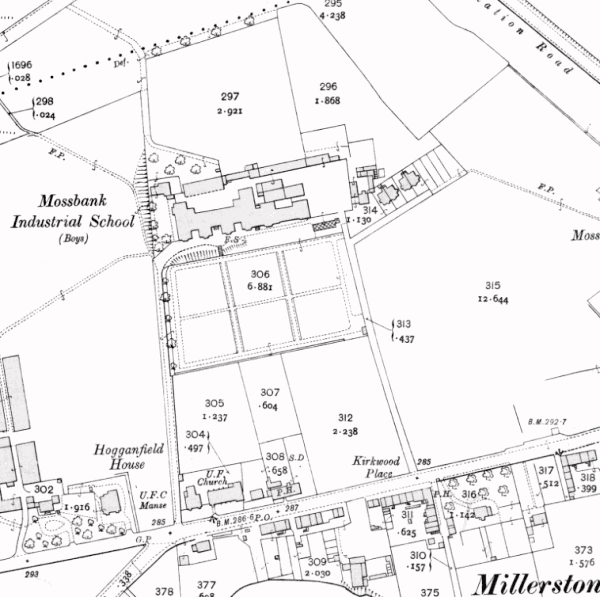
Glasgow Industrial School for Boys site, Mossbank, c.1910.
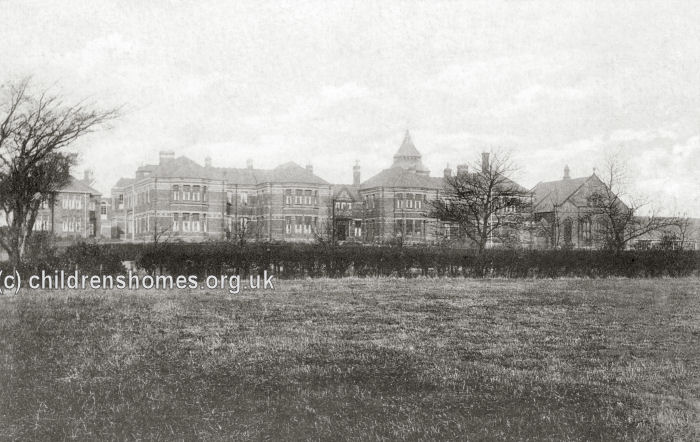
Glasgow Industrial School for Boys from the south, Mossbank, early 1900s. © Peter Higginbotham
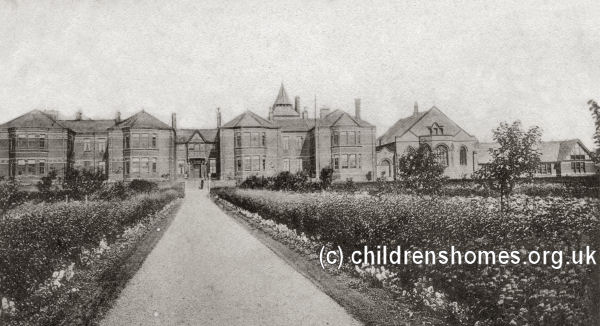
Glasgow Industrial School for Boys from the south, Mossbank, early 1900s. © Peter Higginbotham
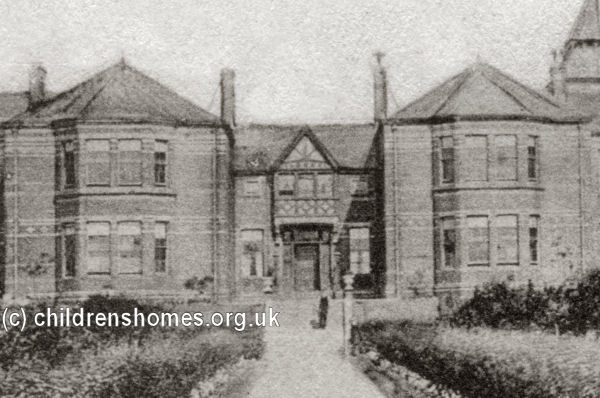
Glasgow Industrial School for Boys from the south, Mossbank, early 1900s. © Peter Higginbotham
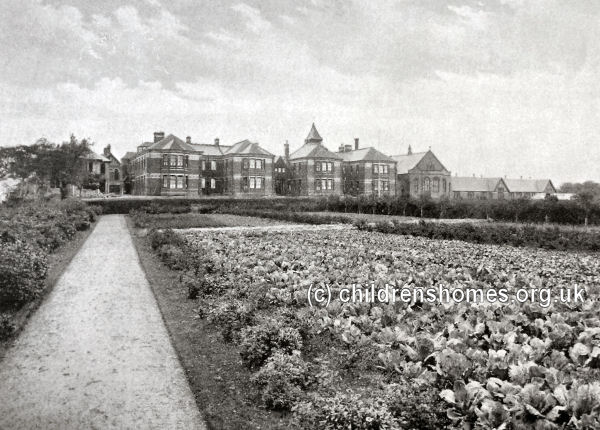
Glasgow Industrial School for Boys from the south, Mossbank, early 1900s. © Peter Higginbotham
An inspection in 1879 noted the 'extraordinary' number of deaths that had occurred at the School. In 1878, there were 11 deaths and 8 discharges on account of disease, and 10 deaths and 9 discharges occurring in 1879. It was suggested that the situation of the School was unhealthy and that special provision in the clothing and diet should be made to strengthen the weak and enfeebled constitution of the young children admitted. It was noted that the provision of a new infirmary was being contemplated by the School. Industrial training for the older boys included tailoring and shoemaking. A class of boys worked in the School's large bakery which supplied bread to the girls' establishment at Maryhill. The inspector suggested that some kind of industrial training should be provided for the younger boys. The School maintained a good band. There was a swimming bath, which was replaced by a large new bath in 1884.
In 1894, a large chapel was built, the old one being turned into a recreation and drill room. A new bakehouse was constructed with new boilers for cooking and warming. The School was now supplied with gas and water from Glasgow, and was connected to the city by telephone. There was a cottage home for convalescents on the Clyde at Innellan. There were 30 boys in the tailor's shop and a large class of shirtmakers, menders and darners. Sixty boys worked in the shoe-maker's shop. Sixteen boys worked on the land and in the garden. The staff now comprised: superintendent and matron, Mr and Mrs Falconer; schoolmasters, Mr Conley, Mr Stevenson, Mr Duress; assistant teacher, Miss Falconer; storekeeper and drillmaster, Mr Ferguson; three tailors, three shoemakers, two women in the shirt-making room, two bakers, three farm men, night watchman, engine-man, laundry maid, cook, six dormitory matrons, one hospital nurse, bandmaster and singing-master twice a week.
After a long illness, Mr Falconer died in 1898. He was succeeded as superintendent by Mr William Smith, with Mrs Falconer continuing as matron.
In 1899, four acres of gardens were laid out for vegetable, fruit and flowers. The gardens both supplied the School with fresh produce and also afforded useful training for several boys that would provide future employment opportunities as gardeners. In the same year, construction of a large gymnasium was completed.
On 4 April 1910, the School's new Auxiliary Home at 15 Whitevale Street, Glasgow, was formally certified for operation with accommodation for up to 100 boys. By 1920, its address was recorded as 13 Whitevale Street.
The School's long-serving matron, Mrs Falconer, retired in November 1910. She was succeeded by Miss Agnes Elsie Smith. Other staff now included: assistant superintendent, Mr G. Du Ross. Head schoolmaster, Mr R. Cairns; assistant schoolmasters, Mr A.W. Campbell, Mr E.A. Rodger, Mr G.H. Ashurst, Mr W.C. Lawrie; bandmaster, drill master, pipe-major and gardener, swimming instructor, foreman shoemaker, shoemaker, tailor, baker, joiner, grieve, assistant grieve, dairyman, engineman, watchman, two shirtmakers, laundry maid, four domestics. Medical officer, Dr R. Wilson-Bruce. Dentist, Mr W. R. Taylor. Chaplains, Rev. J.F. Anderson and Rev. J.F. Miller.
In 1933, Mossbank became an Approved School, one of the new institutions introduced by the Children and Young Persons (Scotland) Act to replace the existing system of Reformatories and Industrial Schools. It could accommodate up to 150 Junior Boys aged from 12 to 14 years at their date of admission. In the late 1950s, there were plans to remove the school to the former orphanage premises at Kilmacolm. Although a new institution, known as Balrossie School, did open at Kilmalcolm, the original Mossbank School continued in operation at Millerston.
In 1943, the school was said to provide training is given in woodwork, boot-repairing, cookery and gardening. The headmaster was now Mr E.A. Rodger. During the Second World War the establishment was evacuated to Ardgoil, near Lochgoilhead, Argyllshire, where it was known as the Mossbank Boys' Camp.
Following Scotland's 1968 Social Work Act, Mossbank was in line to become a 'List D' School. However, the deteriorating condition of the building led to its replacement in 1970 by the new Kerelaw School at Stevenston.
The Mossbank buildings no longer survive.
Records
Note: many repositories impose a closure period of up to 100 years for records identifying individuals. Before travelling a long distance, always check that the records you want to consult will be available.
- Glasgow City Archives, The Mitchell Library, 210 North Street, Glasgow G3 7DN, Scotland.
Census
Bibliography
- Higginbotham, Peter Children's Homes: A History of Institutional Care for Britain's Young (2017, Pen & Sword)
- Mahood, Linda Policing Gender, Class and Family: Britain, 1850-1940 (1995, Univeristy of Alberta Press)
- Prahms, Wendy Newcastle Ragged and Industrial School (2006, The History Press)
Links
- None noted at present.
Except where indicated, this page () © Peter Higginbotham. Contents may not be reproduced without permission.


